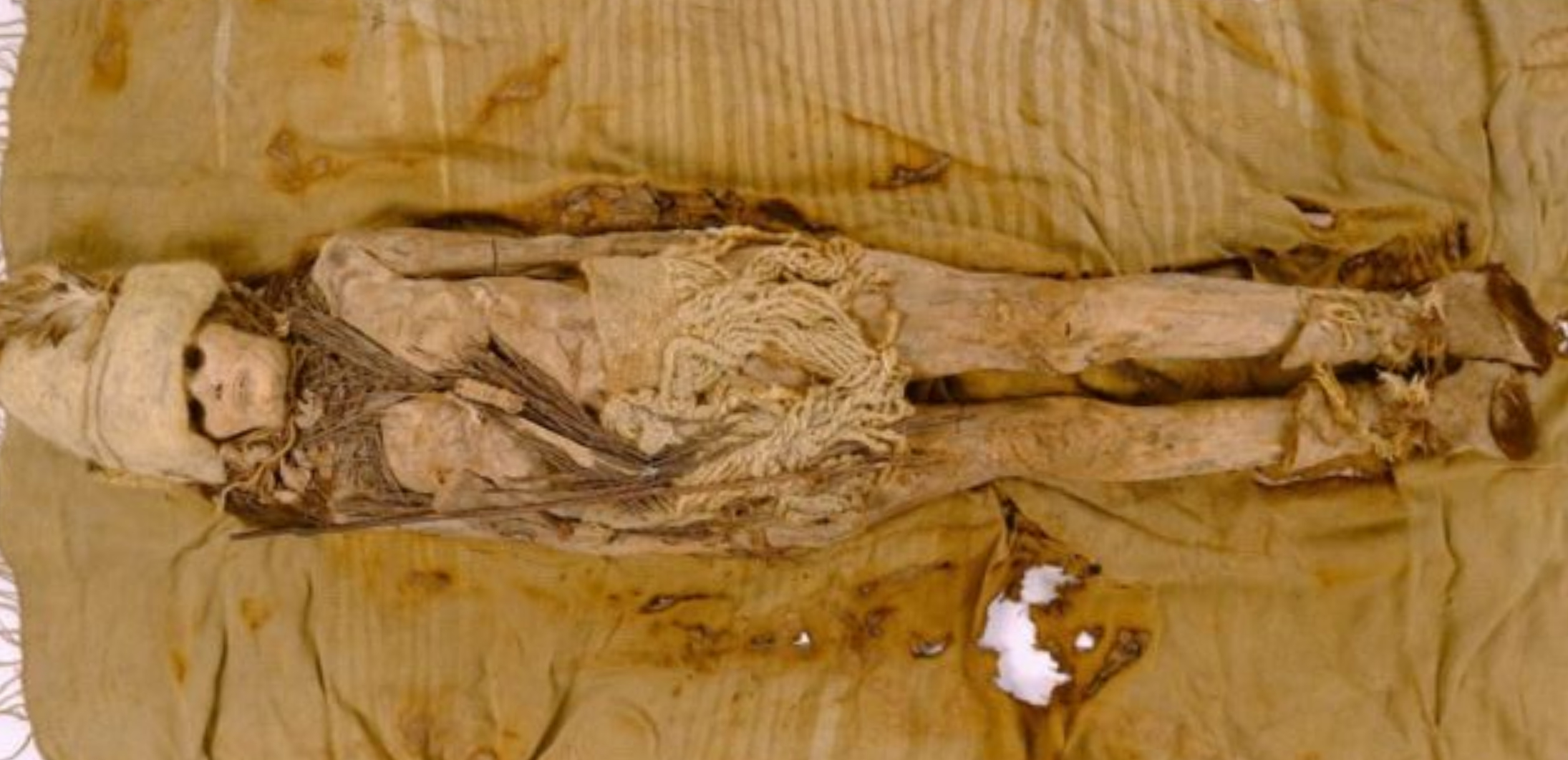Many people could have expired foodstuffs sitting forgotten at the back of our fridges and cabinets, however nothing goes to return near the practically 3,600-year-old cheese samples found clinging to mummified our bodies in northwest China.
The human stays had been recovered from a few of tons of of coffins discovered within the Xiaohe Cemetery in China’s Tarim Basin within the Nineteen Nineties. Smeared throughout the heads and necks of a lot of the mummified corpses was a white materials recognized beforehand as cheese.
It is solely now through the use of the most recent in evaluation strategies that scientists from the Chinese language Academy of Sciences have been capable of affirm cow and goat DNA within the Bronze Age substance, and determine it as kefir cheese; a fermented meals made with kefir grains and a mixture of micro organism and yeast.
“That is the oldest identified cheese pattern ever found on the planet,” says paleontologist Qiaomei Fu from the Chinese language Academy of Sciences. “Meals objects like cheese are extraordinarily tough to protect over 1000’s of years, making this a uncommon and precious alternative.”
Additional evaluation confirmed the kefir cheese had excessive ranges of the Lactobacillus kefiranofaciens micro organism, indicating these microbes had been necessary in fermenting the kefir. These microorganisms are nonetheless used immediately to provide such a cheese, with the main strains present in Russia and Tibet.
The researchers had been capable of hyperlink this specific historical L. kefiranofaciens kind to a associated pressure originating from Tibet, suggesting that is the place the micro organism traveled from – and never Russia, as has beforehand been assumed.
It is thought that these probiotic kefir grains had been used to increase the shelf lifetime of the cheese and to fight lactose intolerance – one thing that was way more widespread within the historical world. This course of would’ve made it simpler for folks to securely digest the milk produced by their livestock.

What’s extra, the group notes that the traditional L. kefiranofaciens studied right here would’ve been extra prone to set off immune system responses within the human gut. In different phrases, this species of bacterium has turn out to be extra at dwelling with human hosts over time whereas additionally enhancing its capabilities as an agent for fermenting milk.
“That is an unprecedented examine, permitting us to look at how a bacterium developed over the previous 3,000 years,” says Fu.
We are able to hint the consumption of cheese again round 7,000 years, although in fact little or no proof stays in any case that point. This new examine ties in with analysis from 2014, which instructed the substance was kefir cheese primarily based on the proteins inside it.
The rationale behind the cheese’s presence within the graves is not clear, however given the meals’s place as a delicacy, it is believable the small clumps had been starter cultures for persevering with the cheese’s manufacturing within the afterlife.
“Learning the traditional cheese in nice element may also help us higher perceive our ancestors’ weight loss program and tradition,” says Fu.
“That is just the start, and with this know-how, we hope to discover different beforehand unknown artifacts.”
The analysis has been printed in Cell.





